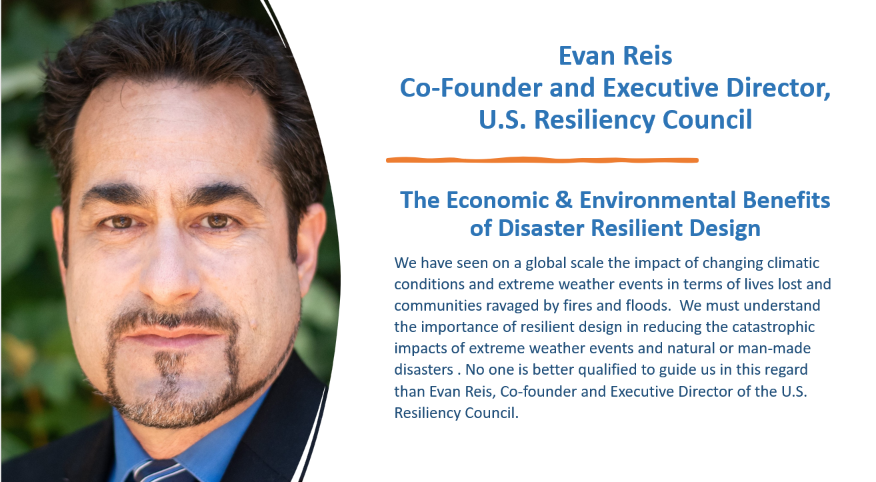The Resilience Advantage – Disaster Resilient Design
Nothing is more compelling as a topic of research and action in today’s very turbulent conditions than the need to demonstrate disaster-resistant buildings and communities’ economic and environmental impacts.
We have seen globally and within our borders that changing climatic conditions and extreme weather events have devastating impacts on lost lives and communities ravaged by fires and floods. We must build better resilient buildings and infrastructure that can better withstand the challenges of climate change and other adverse events resulting from Earth’s natural processes.
No one is better qualified to guide us in this regard than Evan Reid, Co-founder and Executive Director of the U.S. Resiliency Council.
Evan graduated with Degree in Structural Engineering from Stanford University and began a decade of helping the University recover from the Loma Prieta Earthquake. He has become a national leader in seismic risk management and performance-based design, publishing more than 50 papers and articles on resilience and presenting to groups of building stakeholders around the country.
He co-founded the US Resiliency Council in 2011 to educate building stakeholders and the public about the gap between the growing sustainability movement and actual resilient design.
The mission and vision of the USRC are to advocate for policy and incentives that promote resilience-based methods to ensure a future where we not only have a low impact on the environment but the environment also has a low impact on us.
NEWS FLASH
Evan Reis will be a Keynote Speaker at the Upcoming Pacific Northwest Economic Region Summit in Calgary, Alberta, July 24-27. Sponsored by the Pacific Northwest Building Resilience Coalition
As Evan notes in this presentation, we must understand the place that buildings have in the community, corporate and family resilience, be able to quantify the social and economic returns of resilient design to all stakeholder groups and expand carbon and environmental factors to consider reducing these catastrophic impacts through more resilient design and planning.
We must build better resilient buildings and infrastructure that can better withstand the challenges of climate change and other adverse events resulting from Earth’s natural processes.
For the concrete industry to move from the following position to a leading role, it needs to fire with both barrels and expand how it conveys the importance of buildings to the overall functionality of communities and businesses. It must consider resilient design’s social and economic impacts essential to achieving long-term sustainability.
Evan explains the Resilience Advantage and how better planning and risk prevention could have dividends for today and tomorrow.
Evan’s presentation is one of six webinars organized in 2021 by the Pacific Northwest Building Resilience Coalition in partnership with the Pacific Northwest Economic Region.
You can watch this inspiring webinar here. More information on this webinar series is available here.




